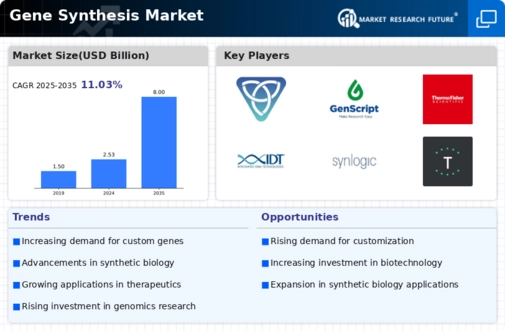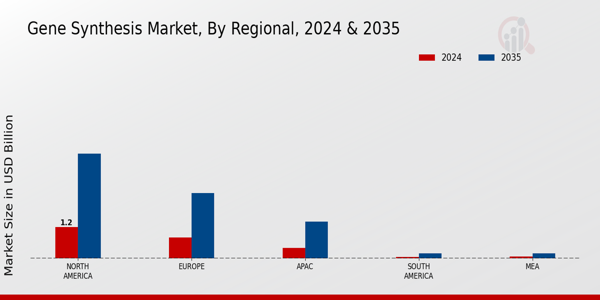Market Trends
Key Emerging Trends in the Gene Synthesis Market
The market phase of gene synthesis is characterized by many transformative trends, which are supported by technological innovations and the growing interest for synthetic biology applications as well as the new wave of precision medicine. The Largely growing trends include an increase in cheap and large-scale gene synthesis technologies. The new possibility to conveniently craft genes into distinct lengths and complexities has paved the way for building investigations that are centered on various applications of synthetic biology, altering pertinent genes with capabilities at an enhanced pace and accuracy ratio, though suggesting ways of developing a lineage of drugs being neural therapeutics. The market centre is created by gene synthesis customization and other tools that facilitate gene editing. With gene synthesis services gaining popularity in the scientific community, it is becoming common for researchers to use the resources available for them to design and construct DNA sequences that respond directly to their research or therapeutic purposes. The combination of genetic editing techniques such as CRISPR-Cas systems enables the development of mutations with unprecedented precision; this opens opportunities for creating genetically modified organisms, implementing gene therapy intervention programs and advanced functional genomics research. Continuous use of synthetic biology and biotechnology is shaping gene synthesis sector. The application of gene synthesis in synthesizing microorganism that can be used for engineering is applied to run industrial processes. Gene synthesis also has an impact on drug discovery through the construction of a synthetic DNA library. This is an indication of the broadening vegetation of synthetic biology and embodiment gene synthesis in many fields of different disciplines, bringing about advancement and identifying forms for genetic factors. Kickup collaborations and partnerships are driving the gene synthesis market. Firms that offer genes synthesis cannot be left behind as the conjunction has been carried out with academic institutions, pharmaceutical companies, and research organizations. These partnerships provide learning opportunities between organizations allowing them to share skills, knowledge, assets, and latest technologies helping in creating dynamic ecosystem for enhancing the gene synthesis potential and usages. Interestingly, the shift toward collaborative projects indicates broader components of gene synthesis as an interdisciplinary approach that is able to overcome complex challenges with collective knowledge and capabilities. Breakthroughs in DNA sequencing have sparked it and goaded gene synthesis market. Advances of the future will include NGS, which through its link with a variety of high-throughput sequencing methods will lead to faster and more accurate reading of DNA sequences for verifications syndications genes. These features also make the practice of quality control when gene synthesis more efficient and reliable, with synthetic biology applications working better. Automation and digitalization are gaining more popularity in the synthesized gene market. The automated gene synthesis platforms significantly facilitate the process flow, decrease turnaround times, and increase the scale of synthetic gene services. In addition, not only do digital platforms make the genes easier to design, order and trace, but they also create an even more accessible process of knocking-out by way that it is easier.













Leave a Comment